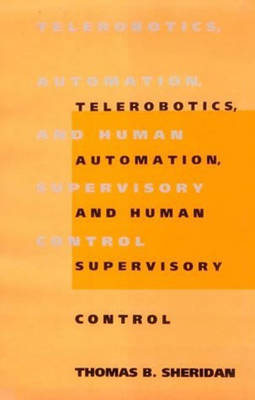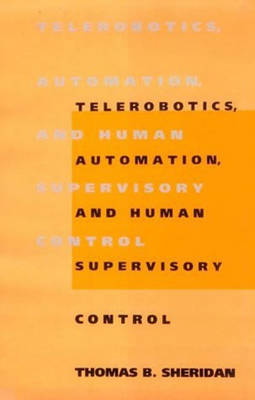
- Retrait gratuit dans votre magasin Club
- 7.000.000 titres dans notre catalogue
- Payer en toute sécurité
- Toujours un magasin près de chez vous
- Retrait gratuit dans votre magasin Club
- 7.000.0000 titres dans notre catalogue
- Payer en toute sécurité
- Toujours un magasin près de chez vous
Description
For the past three decades, the author and his colleagues in the MIT Man-Machine Systems Laboratory have been carrying out experimental research in the area of teleoperation, telerobotics, and supervisory control - a new form of technology that allows humans to work through machines in hazardous environments and control complex systems such as aircraft and nuclear power plants. This timely reference brings together a variety of theories and technologies that have emerged in a number of fields of application, describing common themes, presenting experiments and hardware embodiments as examples, and discussing the advantages and the drawbacks of this new form of human-machine interaction.There are many places - such as outer space, the oceans, and nuclear, biologically, and chemically toxic environments - that are inaccessible or hazardous to humans but in which work needs to be done. Telerobotics - remote supervision by human operators of robotic or semiautomatic devices - is a way to enter these difficult environments. Yet it raises a host of problems, such as the retrieval of sensory information for the human operator, and how to control the remote devices with sufficient dexterity. In its complete coverage of the theoretical and technological aspects of telerobotics and human-computer cooperation in the control of complex systems, this book moves beyond the simplistic notion of humans versus automation to provide the necessary background for exploring a new and informed cooperative relationship between humans and machines.
Contents
Introduction - Theory and Models of Supervisory Control: Frameworks and Fragments - Supervisory Control of Anthropomorphic Teleoperators for Space, Undersea, and Other Applications - Supervisory Control in Transportation, Process, and Other Automated Systems - Social Implications of Telerobotics, Automation, and Supervisory Control
Spécifications
Parties prenantes
- Auteur(s) :
- Editeur:
Contenu
- Nombre de pages :
- 415
- Langue:
- Anglais
Caractéristiques
- EAN:
- 9780262515474
- Date de parution :
- 01-01-03
- Format:
- Livre broché
- Format numérique:
- Trade paperback (VS)
- Dimensions :
- 157 mm x 231 mm
- Poids :
- 580 g

Les avis
Nous publions uniquement les avis qui respectent les conditions requises. Consultez nos conditions pour les avis.






